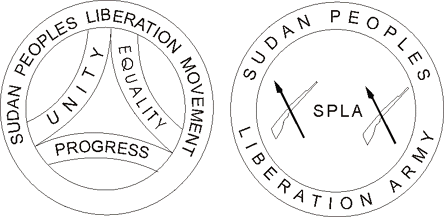JUBA, Sudan — The Southern Sudanese army is on the eve of a critical moment in its 27 years of existence: the south’s independence referendum. As my fellow Juba-based journalist Alan Boswell wrote in an excellent analysis for Jane’s Intelligence Review, if the referendum results in southern secession, the former rebel moment will become “the army of the world’s newest country.”
The Sudan People’s Liberation Army fought 21 years of war against a better-resourced northern military, which enabled its political arm, the SPLM, to negotiate a 2005 peace deal with the best possible outcome: a legitimate chance at statehood. The south paid the price of this low-grade conflict with the lives of more than two million of its people (mortality surveys have found that more died from the effects of war—famine, displacement—than were killed in active combat).
In less than three weeks, the Southern Sudanese will head to the polls to exercise their hard-won right. Boswell’s piece (which you can read if you pay here) raises some important questions about the future of the SPLA. Here are some clips from the piece along with the questions they raised for me:
– “[United States government-funded] support has not been enough to support a major transformation; more than USD100 million has been spent, but the vast bulk of that has gone to facilities, including new bases…The effect has been minimal, given the large deficiencies within the SPLA at present. “It would take 20 years to transform this army,” one Western military analyst in Sudan told Jane’s.”
Me: Does the U.S. have a detailed post-referendum strategy in the works for U.S. support to the southern army? How might the current efforts—which have intensified in recent months through projects implemented by American military contractors like AECOM—to build new infrastructure for the army conflict with larger, strategic questions about U.S. support (whose answers depend on the looming vote)?
– “… southern Sudan has the potential to use proxies against Khartoum, acting as another disincentive to conflict. The insurgency in Darfur continues to be a major concern for Khartoum and the SPLM maintains friendly relations with many of the rebel groups active there.”
-Me: Using links with Darfuri rebels as a bargaining chip or as proxy against Khartoum would be a bold move that would firmly solidify the link between Sudan’s north-south issues and the Darfur conflict. War by proxy is Khartoum’s favorite trick in the book. Seems as though Khartoum may have already anticipated this possibility (the recent border bombings…)–will they block the south from developing this strategy any further?
– “This time, the war would break out not in the countryside but along the border, especially near the oil fields, and in southern Sudan’s cities…Khartoum’s major challenge would not be taking the oil fields initially, but protecting them well enough to keep oil operations functional.”
– Me: Indeed. During a recent visit to Sudan’s most productive oil fields (blocks 3 & 7, in the south’s Upper Nile state), I learned from engineers working for the Petrodar Operating Company (a consortium of Chinese, Sudanese, Malaysian and Emirati companies)that if Petrodar stops pumping Dar Blend out of the ground, thus leaving crude unmoving in the 870-mile pipeline for more than three days, then the pipeline wiill “gel” and operations will be forced to stop for six months or more in order to repair the damage to the pipeline (which cost more than $1 billion alone to build). This would be a disaster for Petrodar, for Khartoum, and for Juba—all have serious financial stakes in the continuation of oil production in spite of the political and military issues surrounding the break-up of Africa’s largest country. The oft-cited stat that 98% of the southern government’s revenues come from oil is one example of why war in the oil fields would be catastrophic. It’s difficult to imagine why the parties would NOT do all they can to avoid this scenario.
This list could and does go on. One thing is for sure, however: change is coming for the SPLA. The issue of how the army adapts and transforms itself in the years to come is intimately linked to the prospects of peace and stability in Southern Sudan.
P.S. Small Arms Survey tackles the topic of the SPLA’s transformation in exacting detail in this paper released last month.
